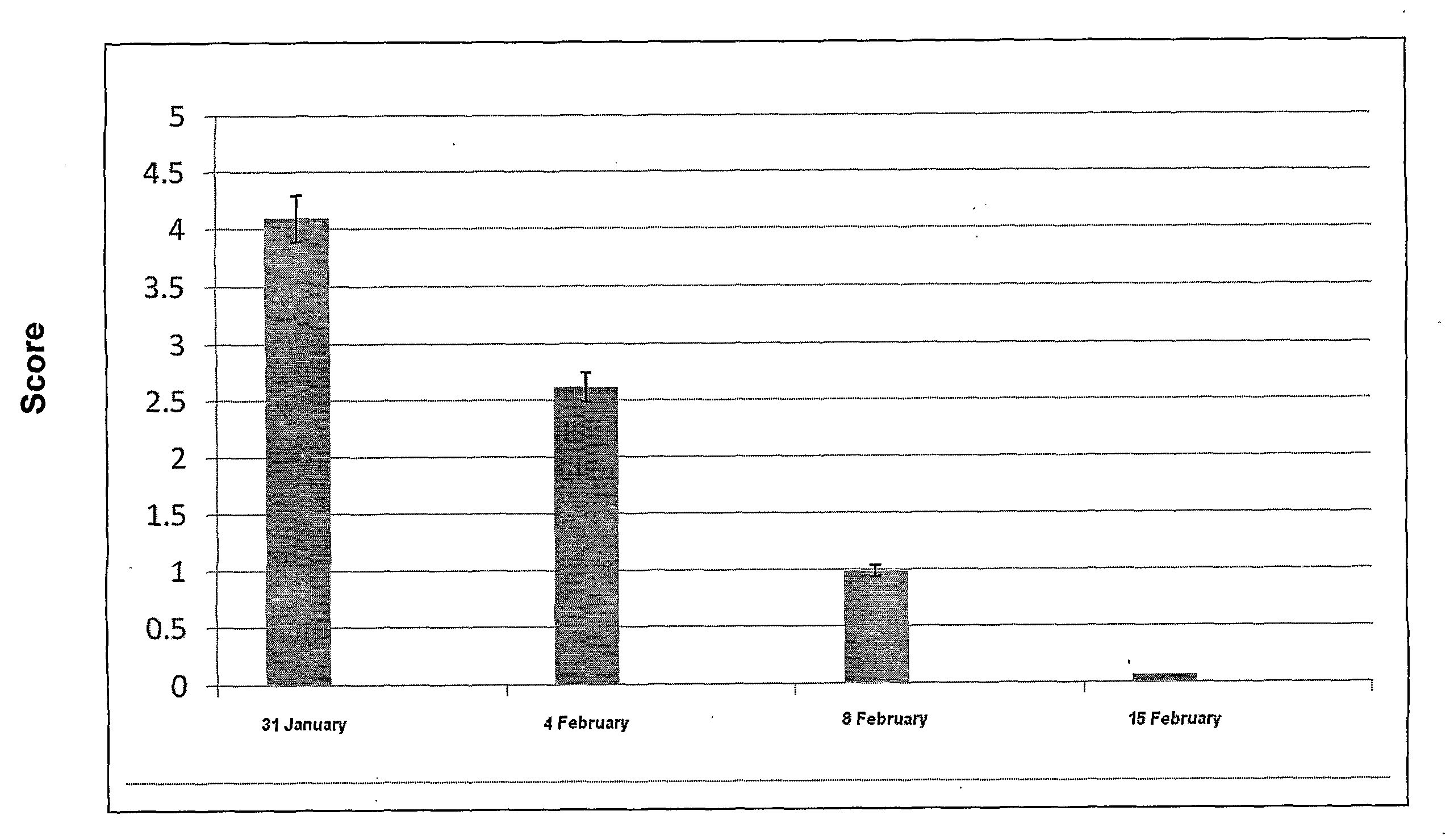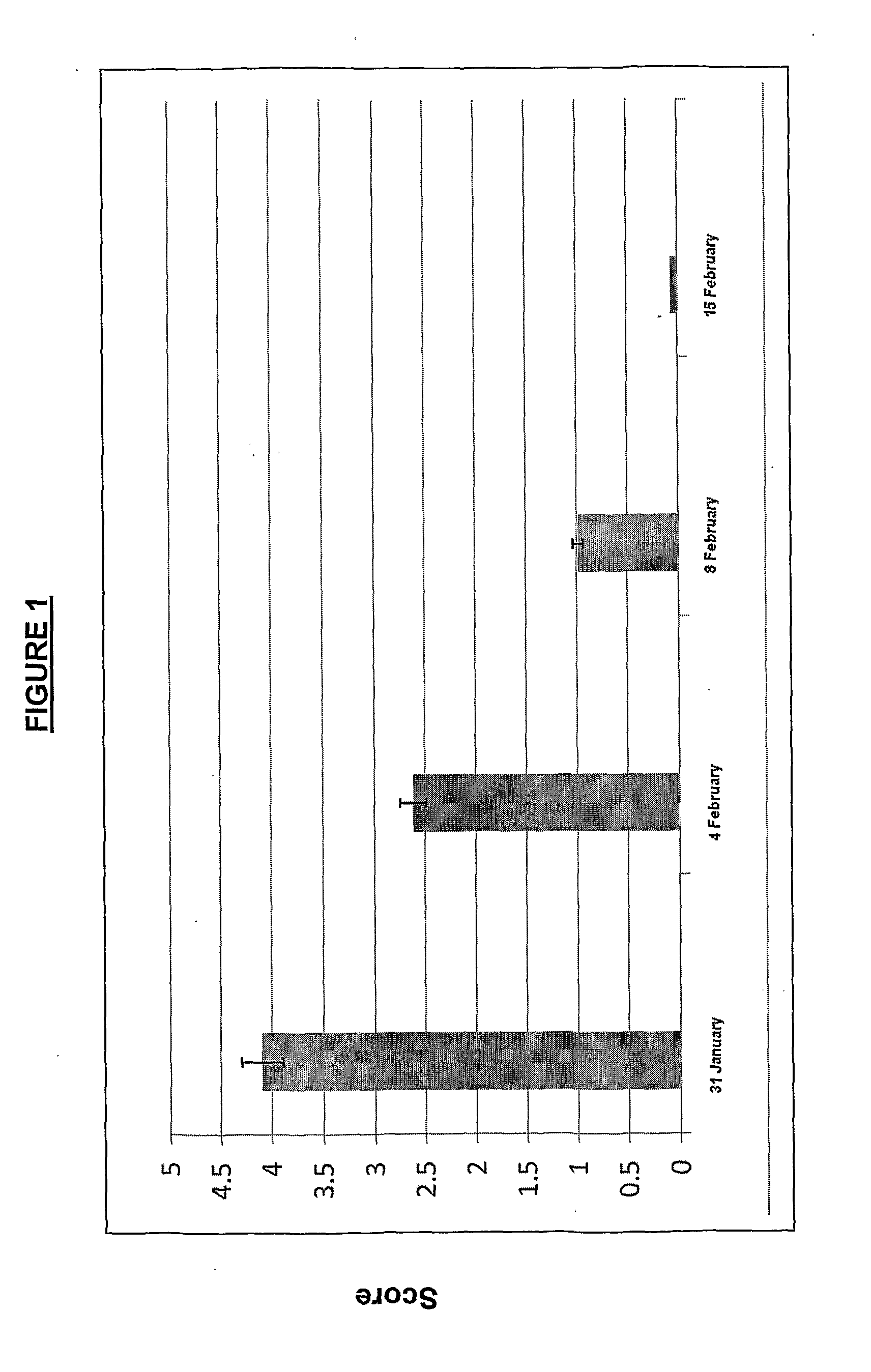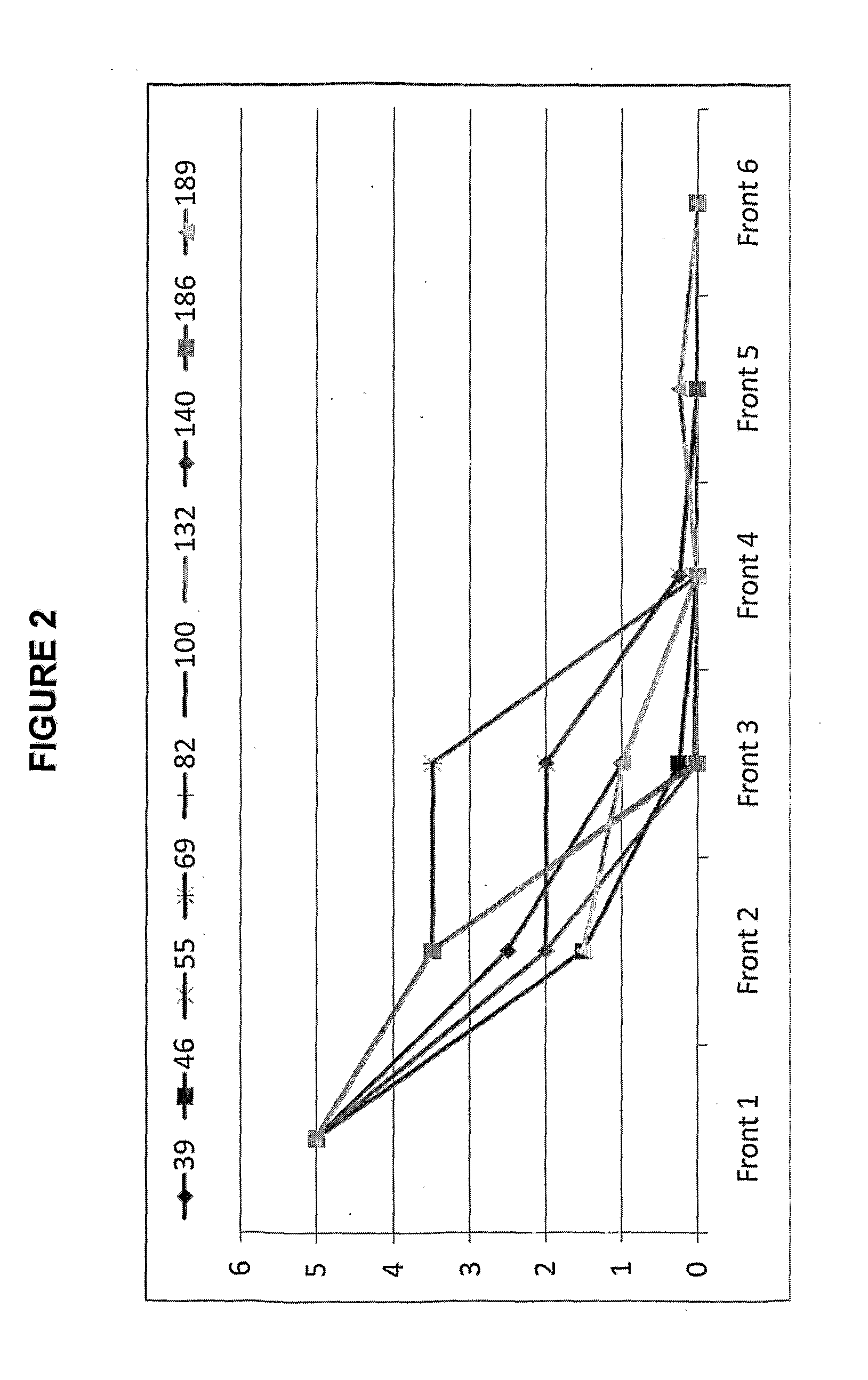Animal treatment formulation and methods of use
a technology for animal treatment and formulation, applied in the field of animal treatment formulation, can solve the problems of heifers being even more susceptible to mastitis, heifers being far more stressed than other cows, and high occurrence of bovine mastitis
- Summary
- Abstract
- Description
- Claims
- Application Information
AI Technical Summary
Benefits of technology
Problems solved by technology
Method used
Image
Examples
example 1
[0105]
qty forNoIngredients102 gms0.7 kgs1Penicillin V*1070.282Bismuth subnitrate604203Aluminium stearate1.510.54Methyl paraben0.040.285Propyl paraben0.020.146Heavy liquid paraffin30.44213.08Total102714
example 2
[0106]
qty forNoIngredients102 gms0.7 kgs1Penicillin V*20140.562Bismuth subnitrate503503Aluminium stearate1.510.54Methyl paraben0.040.285Propyl paraben0.020.146Heavy liquid paraffin30.44213.08Total102714
example 3
[0107]
qty forNoIngredients102 gms0.7 kgs1Penicillin V*30210.842Bismuth subnitrate402803Aluminium stearate1.510.54Methyl paraben0.040.285Propyl paraben0.020.146Heavy liquid paraffin30.44213.08Total102714
PUM
| Property | Measurement | Unit |
|---|---|---|
| time | aaaaa | aaaaa |
| physical | aaaaa | aaaaa |
| concentration | aaaaa | aaaaa |
Abstract
Description
Claims
Application Information
 Login to View More
Login to View More - R&D
- Intellectual Property
- Life Sciences
- Materials
- Tech Scout
- Unparalleled Data Quality
- Higher Quality Content
- 60% Fewer Hallucinations
Browse by: Latest US Patents, China's latest patents, Technical Efficacy Thesaurus, Application Domain, Technology Topic, Popular Technical Reports.
© 2025 PatSnap. All rights reserved.Legal|Privacy policy|Modern Slavery Act Transparency Statement|Sitemap|About US| Contact US: help@patsnap.com



